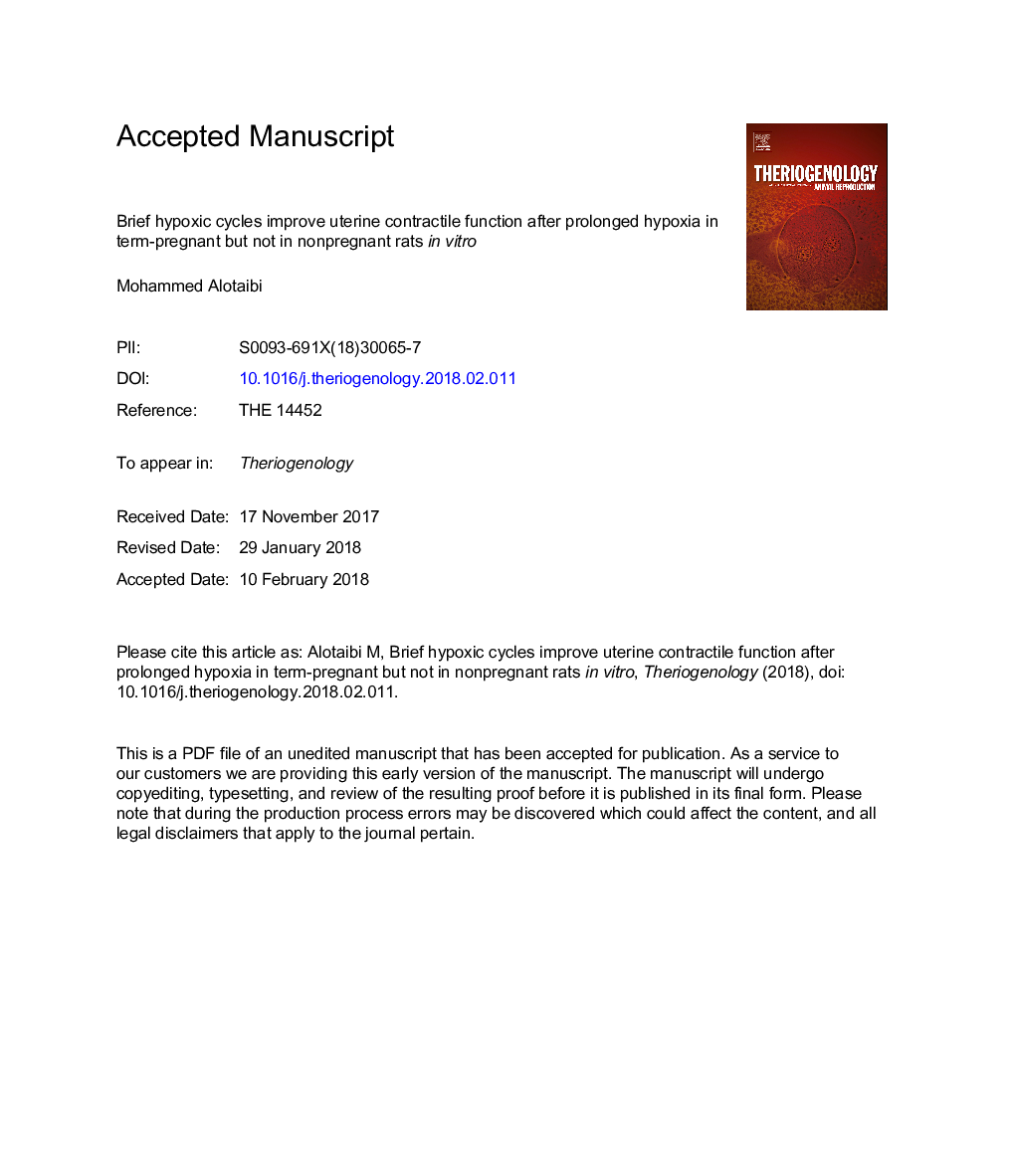| Article ID | Journal | Published Year | Pages | File Type |
|---|---|---|---|---|
| 8426939 | Theriogenology | 2018 | 18 Pages |
Abstract
During labour, the uterus itself is vulnerable to hypoxia/ischemia that can occur with each strong contraction and this may ultimately cause dysfunctional labour in some women. Periods of Intermittent re-oxygenations are beneficial to tissues subjected to hypoxia to wash out metabolic by-products that have been accumulated during hypoxic stresses which may affect the tissue viability. We proposed that short intermittent hypoxic episodes may protect the uterus from subsequent sustained long hypoxia. To investigate this, two sets of experiments were performed on term-pregnant and nonpregnant rat uterine tissues. In one set of experiment the uterus was subjected to sustained long hypoxia for 40â¯min and then allowed to recover in 100% O2. In the other set of experiment the uterus was subjected to 3 cycles of 2â¯min hypoxia each separated by 20â¯min reoxygenation and followed by a sustained long hypoxia for 40â¯min and then allowed to recover. We found that challenging the uterine tissues with intermittent short hypoxic episodes improved the uterine contractility significantly after the sustained long hypoxia in term-pregnant but not in non-pregnant tissues. These results suggest that a mechanism of uterine tolerance (preconditioning) is confined to uterine tissues very close to labour and it is a protective phenomenon to improve the uterine activity despite the long-lasting paradoxical metabolic challenges that occur during the repeated strong labour contractions.
Keywords
Related Topics
Life Sciences
Agricultural and Biological Sciences
Animal Science and Zoology
Authors
Mohammed Alotaibi,
